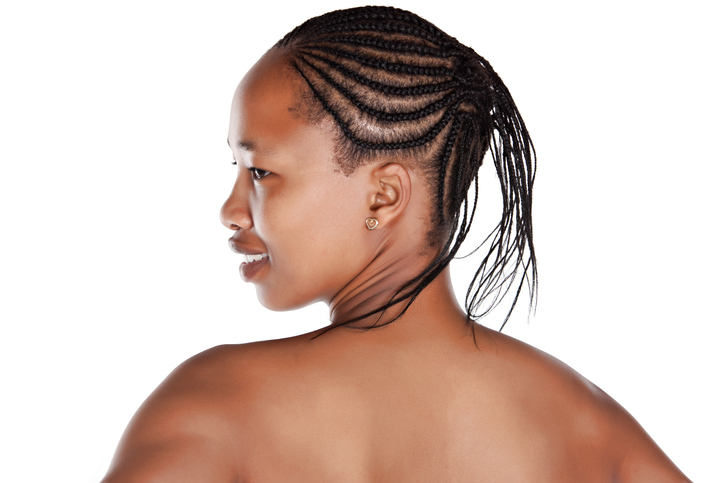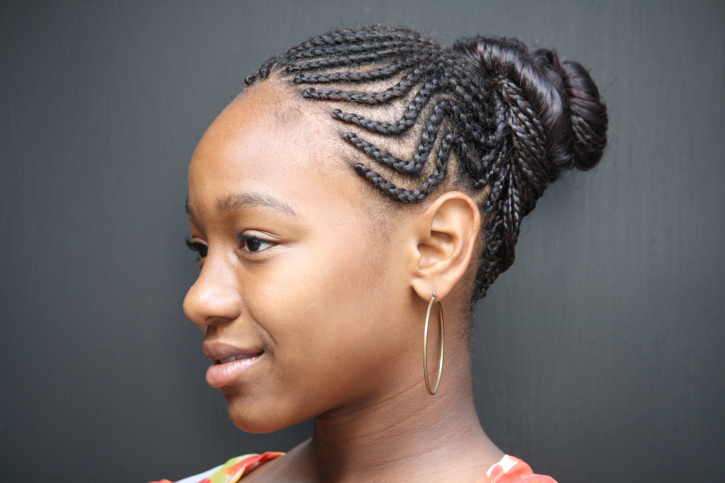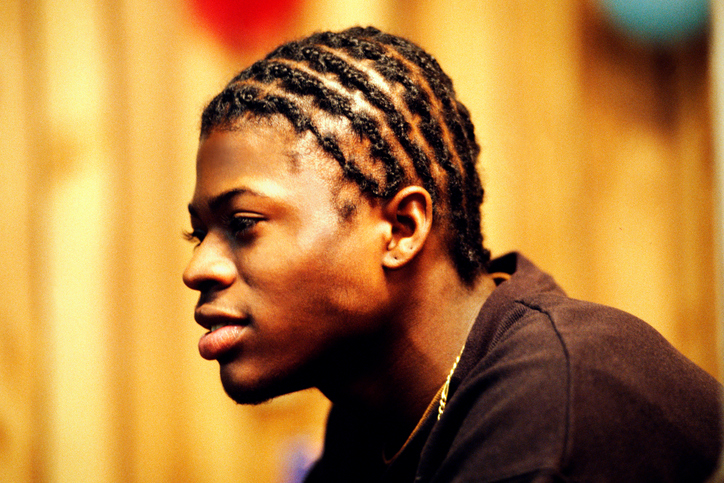
Nowadays, braids are a protective and creative style women use to show off their personal style, their creativeness or protect their hair and scalp. But centuries before, braids were much more than just a hairstyle.
Braids are a part of the tribal customs in Africa. The braid patterns signify the tribe and help to identify the member of the tribe. The cultural significance and roots of braiding can be traced back to the African tribes.
There are many interesting beliefs associated with braid hairstyles. Braid patterns or hairstyles indicate a person’s community, age, marital status, wealth, power, social position, and religion. And in some cases, braids were a form of survival.
According to an instagram post by @KnowYourCaribbean, rice was hidden in braids in order to help slaves survive the middle passage (see the video below):
@KnowYourCaribbean shares that "many African women braided rice or seeds into their hair before journeying the Middle Passage, on their way to enslavement or braided it into their children’s hair before separation, so that they could eat. This video shot in the Maroon community of Suriname, the community with the highest number of undiluted African blood in the Western Hemisphere - demonstrates how their ancestors did it. But more interestingly so, Suriname is the only place where one can find a specific grain of rice from Africa. The rest of the ‘New World’ cultivated an Asian rice. Talk about the real version of ‘Protective Style’"
Depictions of women with cornrows have been found in Stone Age paintings in the Tassili Plateau of the Sahara, and have been dated as far back as 3000 B.C. There are also Native American paintings as far back as 1,000 years showing cornrows as a hairstyle. This tradition of female styling in cornrows has remained popular throughout Africa, particularly in the Horn of Africa and West Africa.
Historically, male styling with cornrows can be traced as far back as the early nineteenth century to Ethiopia, where warriors and kings such as Tewodros II and Yohannes IV were depicted wearing cornrows.
Elaborate patterns were historically done for special occasions like weddings, social ceremonies or even war preparations.
People belonging to a tribe can easily be identified by another tribe member with the help of braid Hhairstyles or patterns.

Immense importance is given to the custom of braiding. The person who braids hair performs it as both a ritual and a social service. It is an art form taught by the senior female member of the family to her daughters and close friends.
This history of braids goes even deeper when you talk about Columbia. Enslaved Africans first started arriving in Colombia in the 16th century, brought there by Spaniards who colonized the area.
The Afro-Colombian hairstyles have origins from these times of slavery, when women would sit to comb their children's hair after a backbreaking day of labor.
The braids were often used to relay messages between slaves, signal that they were going to escape, or even used to keep gold and seeds to help them survive after they would run away.
Because women slaves were initially perceived as a lesser threat, they would hide symbols and items in their hair that would mean various things. Although they were raped and treated as sexual objects to the slave master, their crown carried messages of hope and freedom.
The box braids [we saw in] the ‘90s and [even today] aren’t that different from the Eembuvi braids of Namibia or the chin-length bob braids of the women of the Nile Valley over 3,000 years ago.
Women weaved the hair into a fiber skull cap made from extremely durable materials, such as wool, felt and even human hair unlike the wig caps you find in most beauty supply stores today.

“Cowrie shells, jewels, beads and other meaningful items charmed box braids of earlier women eluding to their readiness to mate, emulation of wealth, high priesthood and various other classifications,” stylist and hair expert Eamon Fowler tells Ebony.com.
“Box braids were expensive in terms of time, material and installation. It could have been assumed that a woman who could afford to sit for many hours adorning her crown was indeed a woman of fortune.”
‘FRO ZEN: WINTER HAIR PREP

The winter is on its way, and if you live in the North its basically already here. Christmas music, candy canes, gifts, snow……split ends, brittle hair, hair battles with hats, hair snags from coat zippers – you catch my drift. It’s not all fun in the sun and snow these days.
Don’t let all of your hair goals go down the drain now that the frigid weather is upon us. With a little more tender love and care, your hair can thrive through the winter as well.
Hot Oil Treatments
Not only is it relaxing to run warm, moisturizing goodness through your hair and scalp, it’s a great way to pre-treat your hair prior to a good wintertime shampoo.
This makes sure that your hair doesn’t completely dry out from cleansing it. Try coating your hair with olive oil and sit with either a hot towel or heating cap on your head for 15-30 minutes before rinsing out.
Condition and Then Condition Some More
Finding a good conditioner is key to keeping your hair soft,manageable and strong. Make sure you are balancing your conditioner use between both a moisturizing and protein-based formula.
If you aren’t one to use both a deep and leave-in condition, you should certainly reconsider it at least for the winter months. Find a light leave in that won’t weigh your locks down, but still gives it that added bit of moisture. I particularly like to use…
….silicone-based leave ins and serums, as they not only help lock in the moisture in my hair, they also keep my frizz at bay.
Protection of African American Braided Hairstyles
I know I know, you worked all summer to get your hair to be as beautiful as it is, and the cool months are the best time to show it off. You don’t have the humidity to worry about, the heat won’t make yousweat, and let’s just be real – no one is expecting you to go anywhere near a pool.
However, the winter is not your hair’s friend. Make sure you protect your hair as much as you can! You can do this with natural styles like bantu knots, buns, twists, braids, or even wigs and weaves.
Cold wind will throw all your good progress down the drain, so the more you hide that hair this winter the better.
Beware of the hat
Hats. Although they can make a bundled up outdoor outfit look at tad bit cuter, your hair is screaming for help underneath. The wool and cotton is not only drying to the hair, hats may rip, tug and pullout your strands! I try to combat this by investing in a a silk/polyester scarf or cap.
Put this on over your hair before you top it off with the hat. It will provide your hair with a protective layer, and you can still get your warmth on.
Trim, Trim, Trim
I think I am more afraid of scissors than I am of water when it comes to my hair. The thought of chopping off my hard earned locks hurts my soul. Yet, if there is any time better to get a good trim, it’s the wintertime.
The last thing you want is for your hair to have split ends, and the winter weather just has a field day with your hair. By the end of the winter your hair will look like that of a scarecrow…no pretty.









